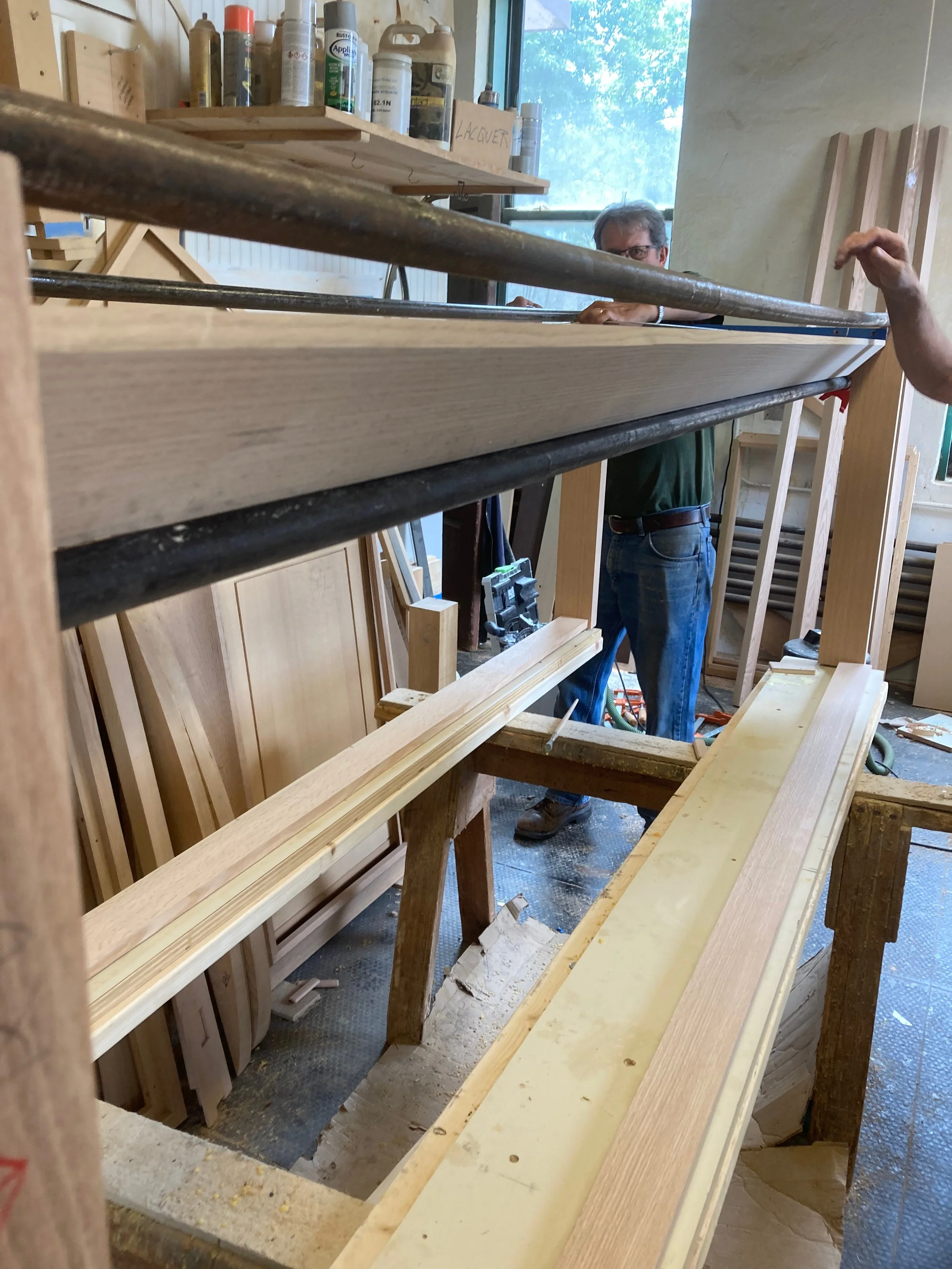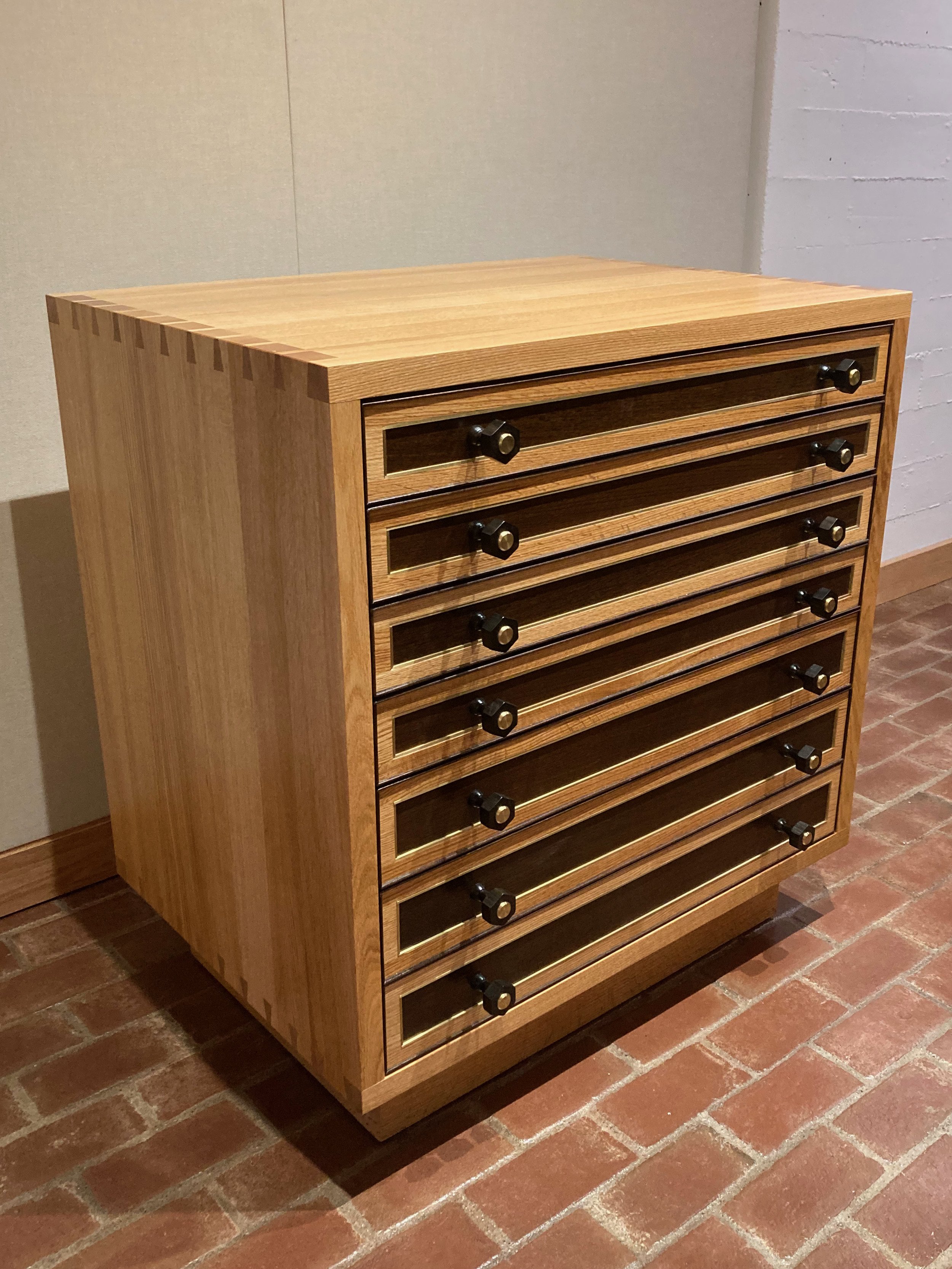A Table Fit for the Bible
Within the vast collection of 140,000 manuscripts housed at Saint John’s there are visual treasures, cultural relics and rare historical references. Even in this library of wonder the Saint John’s Bible stands out for its visual and tactile beauty, but also as a singular creation of our Saint John’s Abbey home and community. After years of planning, writing and illuminating, calligrapher Donald Jackson penned the last word in 2011.
Since that time the Saint John’s Bible has been carried across the globe and shared with millions of people. As the manuscript wandered the globe, a pilgrimage delivered to pilgrims, preparations were made for a permanent home in Collegeville. When the Saint John’s Bible Gallery was completed in 2018 it became a worthy home for such a precious object, a place to share the mission and message of the Saint John’s Bible. Abbey Woodworking was honored to craft the honeycomb walls and doors that welcome visitors to this sacred space
In 2011, when the ink was still drying on the original manuscript, Saint John’s Abbey was gifted a Heritage Edition of the Saint John’s Bible (a high-quality reproduction of the original). While the monks used this fine art copy of the Saint John’s Bible during special liturgies and events, it spent most of its time locked away in a cabinet to protect it from being shuffled between spaces. As the community made plans to renovate the monastery there was a need to create an oratory where monks could read this Bible as intended, in prayer with the texture and illumination of the images and written words.
As the monastery renovation gained steam, Abbey Woodworking was given the opportunity to design and craft the cabinet that would hold the volumes of the Heritage Edition, as well as a reading table where monks could pray with the actual volumes. As we set out to design this furniture we needed to consider other objects in the room, most notably an illuminated 8’ x 4’ stained glass window designed by the famous artist and educator Josef Albers. Our challenge in design is always to keep objects in conversation, allowing other artwork, architecture and open space to speak while making our own contributions through wood and form.
After several prototype tables and stands were proposed we eventually decided that “less is more.” We are polite conversationalists, after all. In the end we needed to create a piece that could hold this large Bible at the appropriate angle, adapting for different readers, while also complementing the stained-glass window when it stood as an empty table. This led us to propose a modern table whose middle leaf would raise to hold the book and lie flat when empty so as not to obstruct the stained glass window.
We selected quarter sawn red oak to pair with the Bible cabinet. The straight grain of this wood added to the simple, yet modern look of the design. The slight angled joint on the legs is matched by the slight angle on the trestle. While subtle, this angled trestle is the defining aspect of the table, and gives a lightness to the top and motion and elegance to the base. I should note that in the shop we call these angled joints miters, though this gets confusing when the bishop visits and is wearing a miter on his head.
While it has been some time since we last posted pictures of projects in the shop, it has not been for lack of projects but rather for the busy-ness of making them. We have been crafting desks for students, kitchens, libraries and even had a guest woodworker, Sam Thomas, craft a trestle table for Brother Justus in our shop. The surrounding pictures are a sample of this recent work. In addition, you will find a photo of Pasi Organ Builders’ Opus 28 , which is currently being assembled and voiced in Arlington, Virginia. Seeing this project from Pasi Organ Builders gives us new inspiration for our capital campaign to bring his studio and craft to Saint John’s.
























